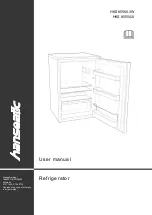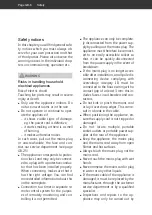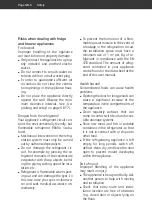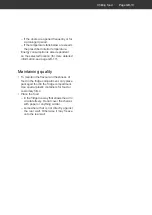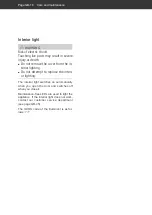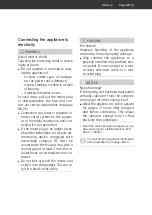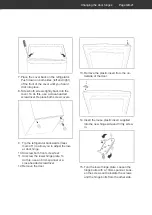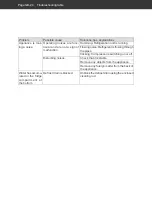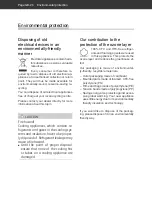
Chilling food
WARNING
Danger of explosion!
Improper handling of the appliance
can lead to explosions.
■
Do not store explosive substances or
spray cans with fl ammable propel-
lants inside the appliance, as they
may cause ignitable gas-air mixtures
to explode.
CAUTION
Health hazard!
Contaminated foods can cause health
problems.
■
Opening the door for long periods can
cause a signifi cant increase of the
temperature in the compartments of
the appliance.
■
Clean regularly surfaces that can
come in contact with food and acces-
sible drainage systems.
■
Store raw meat and fi sh in suitable
containers in the refrigerator, so that
it is not in contact with or drip onto
other food.
■
If the refrigerating appliance is left
empty for long periods, switch off,
defrost, clean, dry, and leave the door
open to prevent mould developing
within the appliance.
Filling the fridge compartment
(5)
(4)
(2)
(2)
(2)
(5)
(5)
(
(2
(
(4)
(2
)
(5)
)
(5
• Fill the fridge compartment in such a way
that the temperature conditions inside are
used to their full potential:
– Place spreadable butter and cheese
in the top door compartment (2) of the
fridge. This is where the temperature is
warmest.
– Store preserves, jars and eggs in the
middle door compartment. Eggs are
best stored on the supplied egg rack.
– Place drinks cartons and bottles in the
bottom door compartment. Position full
containers closer to the hinge in order to
reduce the strain on the door.
– Place cooked and baked foods on the
glass shelves (5).
– Place fresh meat, game, poultry, ba-
con, sausage and raw fish on the glass
shelf above the vegetable drawer (4).
This is where the temperature is lowest.
– Place fresh fruit and vegetables in the
vegetable drawer.
• Only store strong alcohol standing upright
and closed tightly.
• Allow hot food to cool before placing it in
the fridge.
• The temperatures in the appliance and
thus the energy consumption can in-
crease
Chilling food
Page GB-12
Summary of Contents for HKS 8555A3I
Page 30: ......




